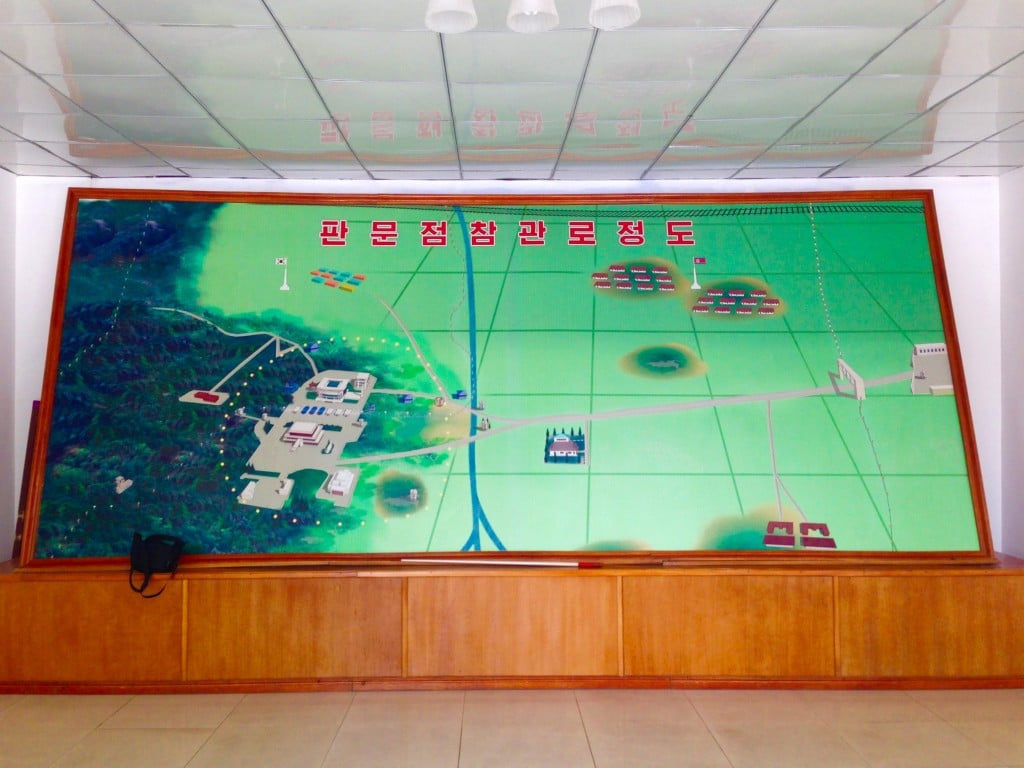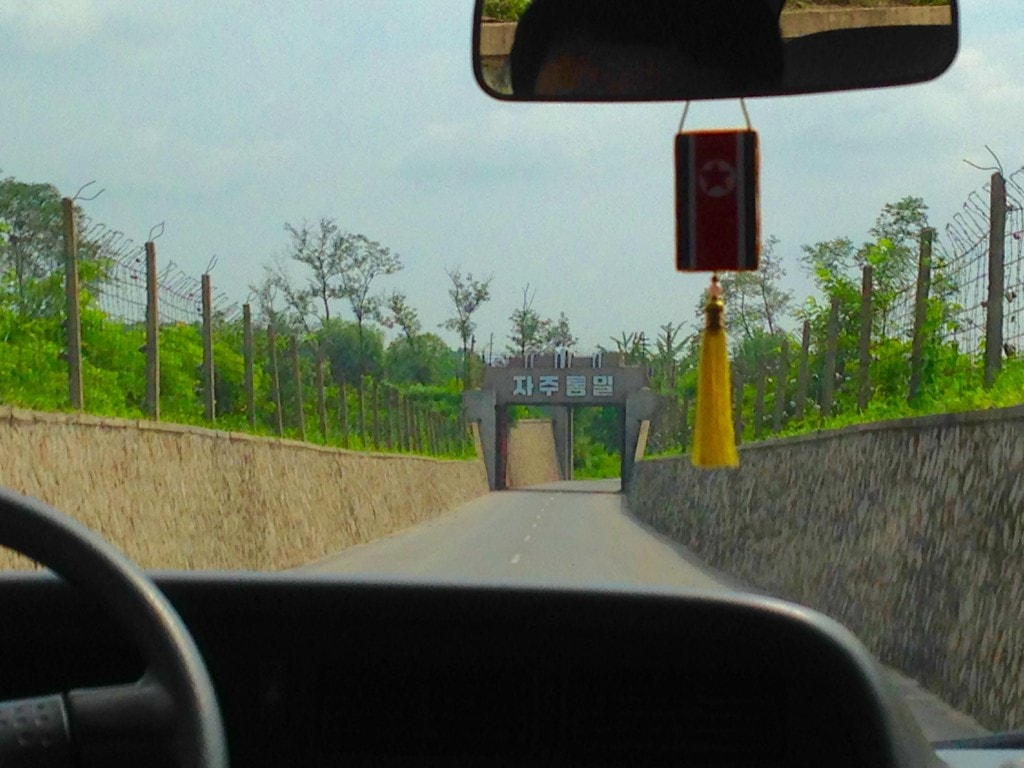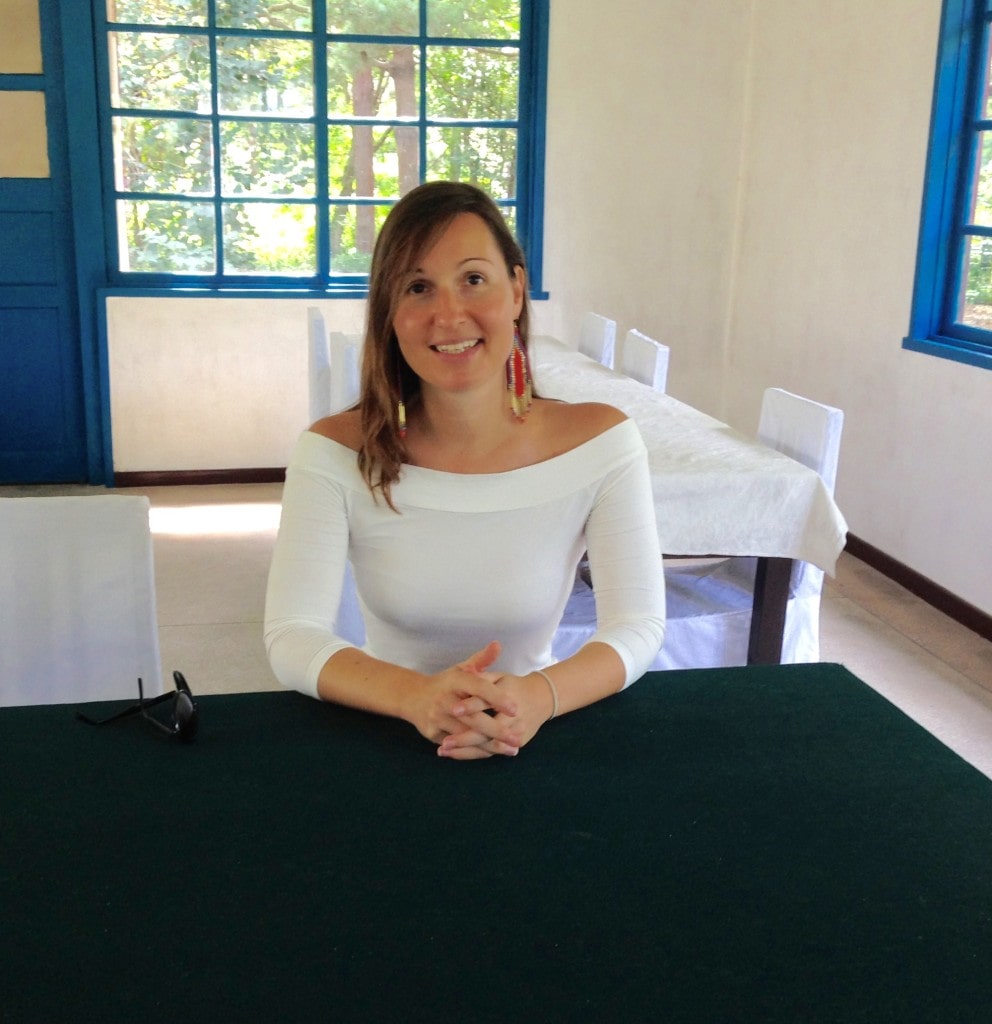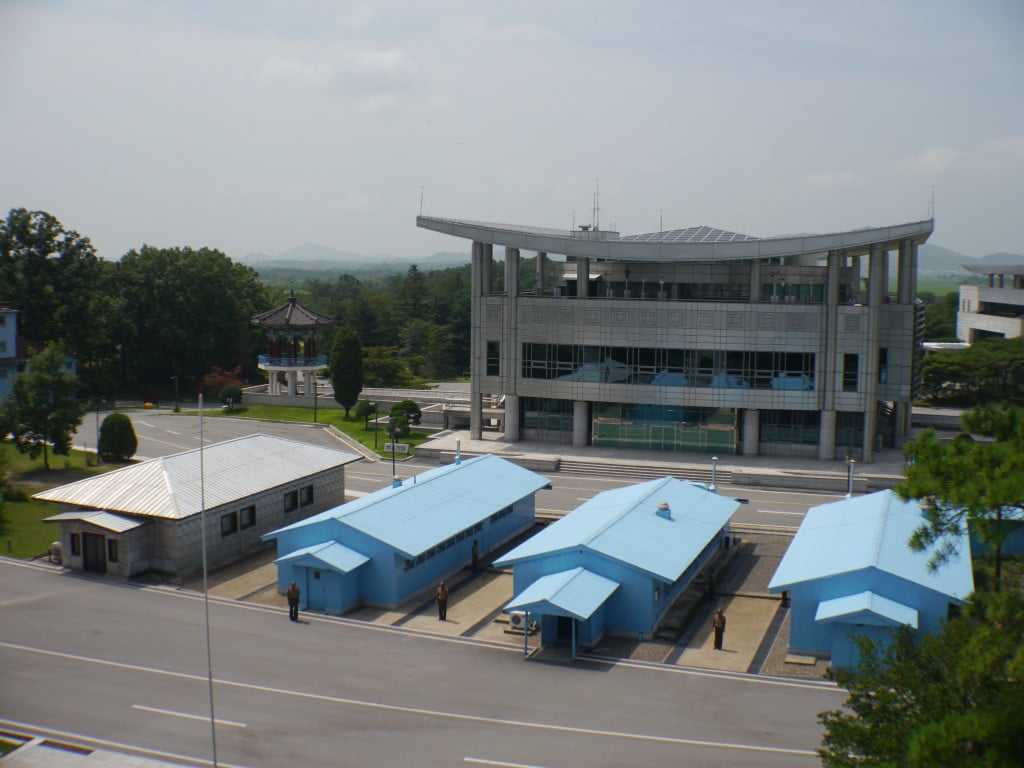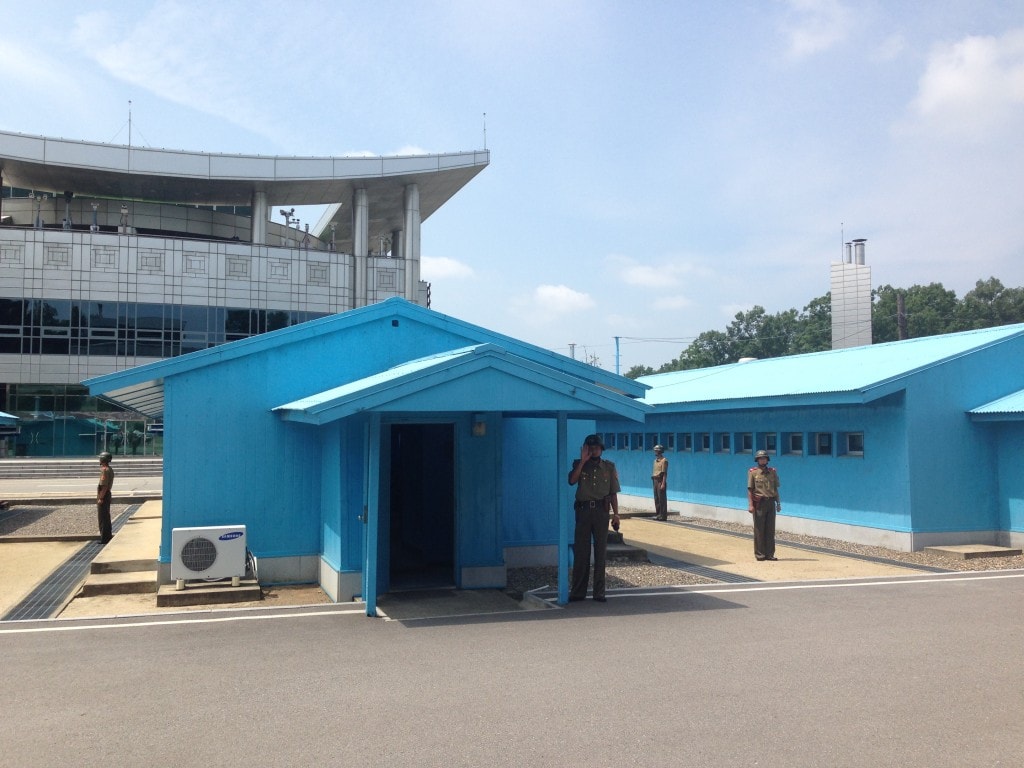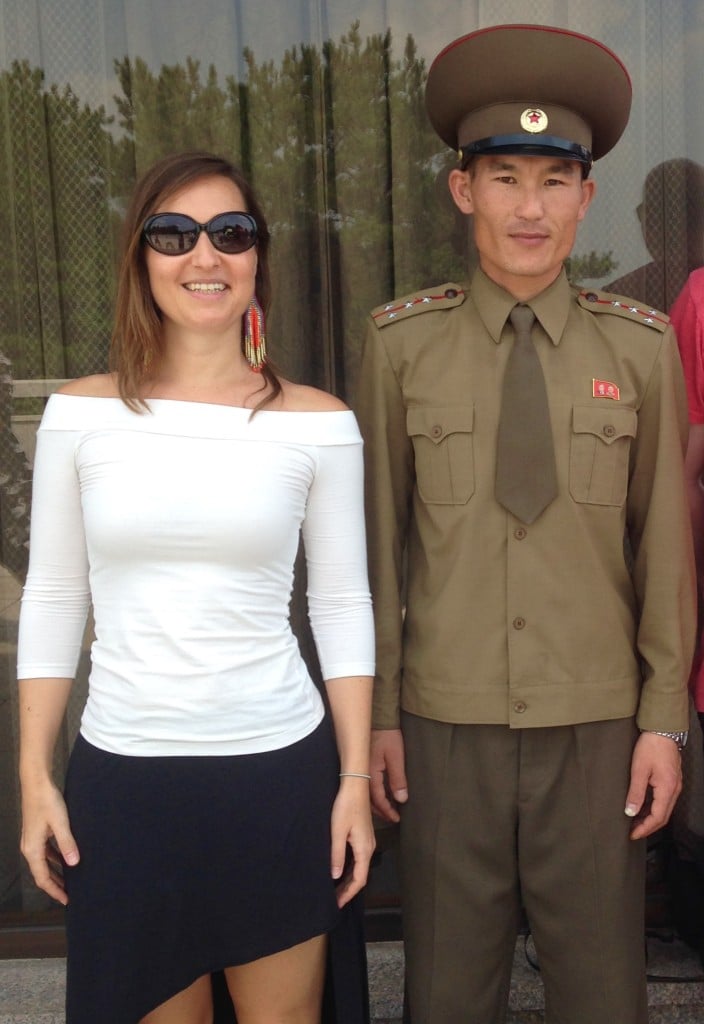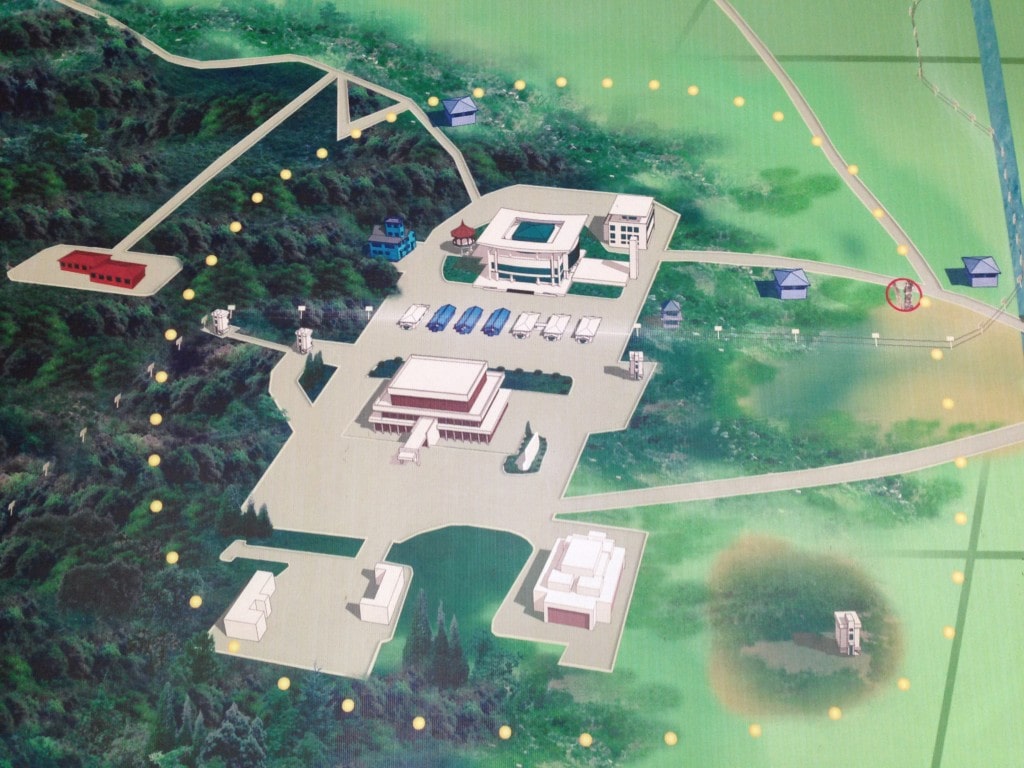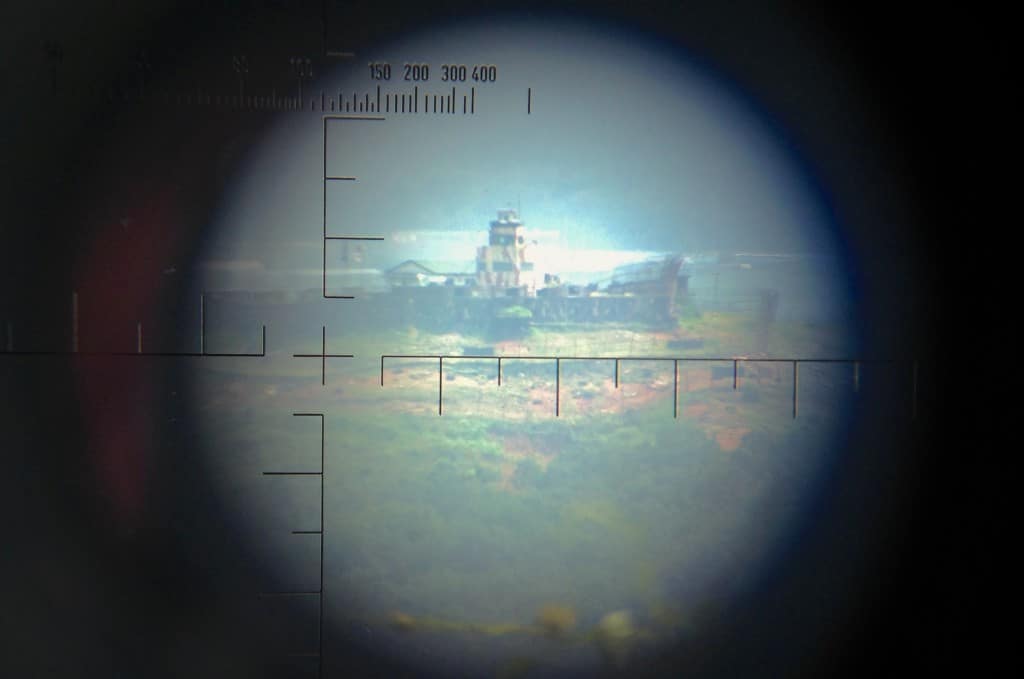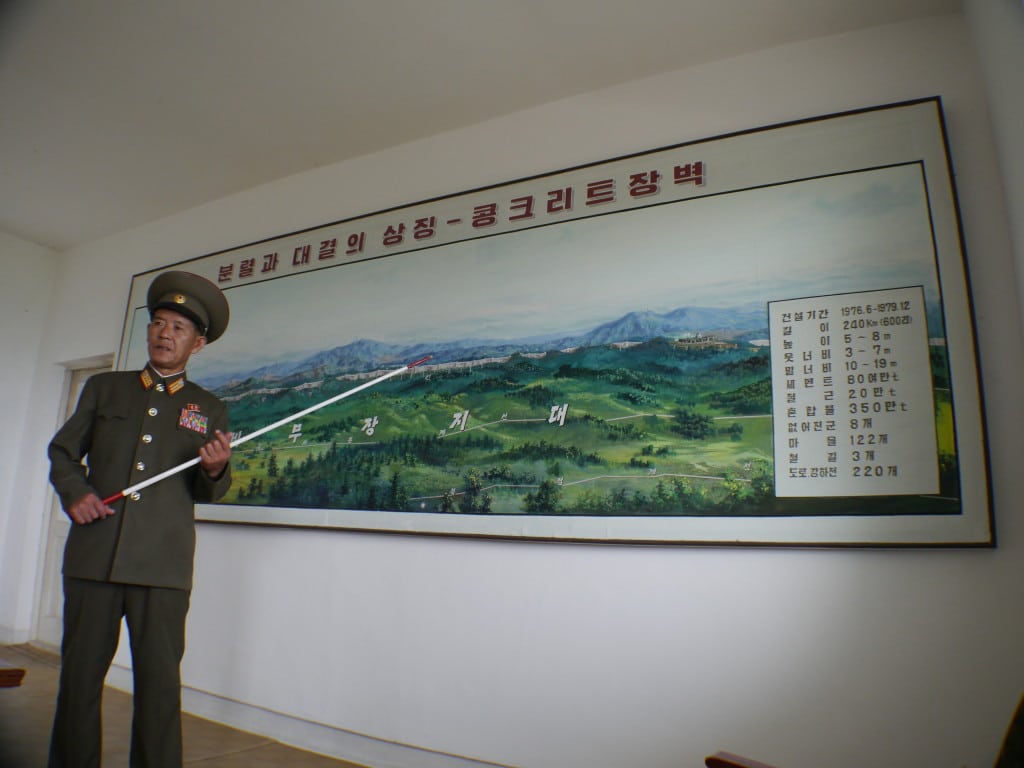As with every war, the Korean War had a winner and a loser, a perpetrator and a victim and, above all, thousands of innocent people losing their life.
I arrived in Pyongyang without the slightest preconception or information about the Korean War. This was in part because I have never been too interested in war stories. Some people are war buffs, they love reading about the military, the conflicts and the tactics. Not me. But besides my personal preferences, I had also underestimated the importance the Korean War had in the national psyche. Had I know that this was going to be the key rhetoric surrounding most of our visits, I would have gone with at least the chronology of events.
However, the fact that I had little information meant that I had an open mind, without the prejudices that would have come with a Western version of events.
By hearing North Korea’s side of the story first, I could not point at the subtle propagandistic views, but I could definitively see the obvious ones.
Ever since we arrived in one of the least visited countries in the world, references to the Japanese and Korean wars were the undertone of every sight. On our arrival day, we stopped at the Arch of Triumph, erected to commemorate the return of the Great Leader after defeating the Japanese troops. From then on, anything that had to do with history mentioned either the Japanese struggle or the Korean war. But it was at the War Museum when the true views of the Regime were clearly and openly told.
As soon as I arrived I was led through a passage to the Captured Enemy Weapons exhibition. A large display area where all of the idem were on display next to the photos of the soldiers who commanded them. “What does this look like?”, smilingly asked my guide as we were entering the passage. It had been designed to look like a trench. Models of this and many other scenes of war were found throughout the museum. A model war camp, the tents the soldiers lived in, the rooms they slept in, the kitchens and kimchi they cooked, the winter heated tents they had built, and so on. The Museum was a real-life size version of the war, complete with a gigantic 42m diameter, 360 degree diorama of a scene of the war obviously won by the Koreans.
To North Koreans, the war was fought against Americans, not agains South Koreans who they called “The Puppet Army”. The first bit of propaganda I had to “suffer” was a fifteen minute video that explained the outbreak of the war, fifteen minutes worth of the most one-sided and soap-operish version of events one could ever imagine. There are intercepted letters proving Americans had been planning this for days, statements describing how a break-out on such a day would cause most damage and raise least suspicions and lots of photographs and documents showing how evil the American government was. Meanwhile, in North Korea, it was “Just another Sunday”, proclaimed the video. At which point I had to contain my laugh, afraid that someone might be watching me. A video showing small children playing in the green grass, after an otherwise black and white video, vivid colors, content babies and mothers and a House in the Prairie music playing in the background. Then all of a sudden, the video switched to bombs being dropped.
The truth is that the Korean war started when the North Korean Army invaded the South in what represented the first action of the Cold War. North Korea crossed the artificial border drawn along the 38th parallel and entered Southern territory forcing the Allies to defend. The war lasted one year, plus two in Armistice negotiations, during which five million people, soldiers and civilians, died. The war did not get much attention in the West, at a time when most countries were trying to recover from World War II, and this is why I had little to no knowledge of the event. Even Americans, “Have no idea about the war, they are ignorant and don’t care”, professed our guide when I asked if Americans visiting come with pre-conceived ideas about the war. I bet if anyone with some knowledge of the war visited the War Museum they would have a hard time believing the North Korean version.
The birth of the two Koreas and split of the Korean Peninsula was agreed at the end of World War II, when the Japanese Empire collapsed and the world powers had to decide what to do with the Japanese territories outside of Japan. The border on the 38th parallel was drawn then, in an attempt to split the territory evenly. The north was occupied by the Soviet Union while the US occupied the south. To North Koreans, the Korean War was America’s attempt at conquering the North and expanding their South Korean territories.
Even before the war started, several casualties on both sides were the result of skirmishes and disputes along the border. Neither side was content with their portion of the peninsula.
Despite the West’s reluctance to support the independence of the South, the attack was perceived as a potential expansionism effort from the Communist Soviet Union and so the US decided to defend the position. It is believed that, in April 1950, a National Security Council report known as NSC-68 had recommended that the United States use military force to “contain” communist expansionism anywhere it seemed to be occurring, “regardless of the intrinsic strategic or economic value of the lands in question”. The fight on the peninsula became the symbol of the Cold War struggle and the first of many potential incursions from the Soviet block.
As the Allied troops forced the North Korean army to their side of the 38th parallel and started to advance north, they realized that a victory would be difficult. At the same time, as they approached the Chinese border, Mao Zedong threatened that an incursion into Chinese territory would be met with full scale war, something which would have caused millions of deaths and the potential incursion of the Soviet forces into European soil. As US President Truman tried to avoid a full blown war with China, General MacArthur, the Commander in charge, wanted to go all in to war.
Peace talks only started when Truman fired MacArthur in 1951, one year after the breakout of war, and five milion casualties later. But it took two years to reach agreement on an armistice, which was signed in Panmunjom, the De-militarized Zone’s main building.
Both sides could not agree on peace so the armistice simply reached a ceasefire. Tecnically speaking, the Korean war has not ended, reason why we still hear risk of war and threats from both sides on the news, more recently as a mine exploded in the buffer zone maiming South Korean soldiers to what the South turned on the propaganda speakers, the North reacted by firing artillery and so on.
It is the Armistice agreement, signed on 27th July 1953 by China, the UN and North Korea, that defined the Demilitarized-Zone and drew a new border, still near the 38th parallel. The Military Demarcation Line (MDL) runs through the middle of the DMZ and is the official border between the two countries, and the world’s most heavily militarized border despite its name. A buffer zone of 4km, 2km on each side of the MDL, was set as part of the Armistice Agreement.
Inside the DMZ there are two villages, one on each side, with the only allowed residents inside the buffer zone. We saw farmers ploughing the fields, cows grazing and a general sense of countryside peace, as we drove through the only road in and out of the Armistice rooms from North Korea.
Our visit started at Panmunjom’s souvenir shop, where we waited for the rest of the visitors on our time slot, to arrive. They were almost entirely Chinese. A girl came to talk to us, interested to hear where we were from and why we had come to North Korea. She was a Politics student and had come to know more about the country. Curious about why Chinese would come to DPRK, we asked her. “Several come here interested to hear more about a truly socialist country. But the most interesting answer I got was a a man in my twelve-people group who said he had come ‘To re-live the heavenly peace of his youth in 70s China'”. She was as surprised by the statement as we were.
When it was time to drive to the Armistice rooms and though the buffer zone, we were called to line up by group and cross the official gate into the DMZ. It was all extremely officious and formal, as if we were heading to a sure death. I walked first around a concrete wall and onto the other side without knowing what to expect. It was mildly terrifying.
At the other side there was a path and all the cars and buses that had fetched the visitors in were lined up. Our car was first in line as we had been the first to arrive and so we headed the convoy of cars into the DMZ. A soldier got into our car. He escorted us through the journey, “For security purposes”, we were told. He was friendly but the air was solemn and serious and we were all in complete silence. We first arrived at the monument to the Great Leader and buildings where the original peace talks took place. We were given the chance to sit at either side of the table before we moved to the main Armistice rooms built on the MDL.
“For one year after the war started, the Americans had suffered great loss, so they came to us asking for Armistice talks”, is the official version the soldier shared with the audience.
In the next building, we got the chance to see the Armistice documents, photos of the talks, newspaper clips and other images. The Korean version of events then became remarkably distorted. After the signing ceremony between Kim Il Song and the Commander of the UN Forces, the Commander “Confessed the defeat of the American Army and brought the UN flag to hide their defeat and their crimes during the war”. There was no mention of the Chinese forces at any point, in fact, there was no mention of the Chinese role in the war during the many Korean War references throughout the trip.
Before we drove to the MDL and the official border between to the two countries, we were shown a monument with Kim Il Song’s signature engraved on a marble slab and dated one day before his death. “He used to come here often and he devoted all his life to the National Reunification”, explained the soldier who was giving us the talk, “Even to the day before his death”. The Monument is today, “The symbol for all Korean people to arise for the struggle of National Reunification”.
The visit ended in the official MDL buildings where Armistice Talks were held for most of the two years. The MDL runs through the blue buildings. “American provocation during the Armistice Talks amounted to more than 800 times,” and “Talks were abandoned when the Americans decided to send a South Korean General to sit in the Armistice Commission discussion as representative for the US”.
In the Armistice Rooms, a sole microphone sits in the middle of the table as the only communication channel between the North and the South.
Later on, as we climbed upstairs to have a better view over the buildings, we had the chance to talk with the soldier-guide on a one-on-one.
“Why did the inclusion of a South Korean General in the discussion provoke the cease of the talks?”, I asked, interested in the underlying thinking. “The inclusion of the South Korean General interfered with the talks”, clarified the guide. Curious about what his views were on South Korea beyond the propaganda magazines that portray them as a slaved society abused by Americans, I ask if he thinks South Koreans want re-unification. “Yes they do”, so, “Are Americans stopping it?”, I add, curious as to why then hasn’t it happened, “Yes”, translates our guide.
We return back to the souvenir shop and have an Imperial lunch before driving to the “Concrete wall”, a mysterious point in our itinerary and one we had joked about with my friend prior to the trip. What would make a concrete wall interesting to a tourist? But who were we to challenge the official list of approved sites.
As we stopped in front of he restaurant, a Colonel joined us. His uniform had more medals and ranks than I have ever seen. “If I put them all they will not fit,” he later adds when I ask about the decorative and colorful marks.
“He will come with us to the Concrete Wall”, announced our guide. He was all smiles and took the front seat.
We drove past the real countryside, crossed a bridge and an almost dried out river where families congregated for a swim and a fun day out. Colorful umbrellas and swimming costumes contrasted with the bright green of the rice paddies, the corn fields and the river mud.
After a few kilometers across unpaved roads we reached a lone building. Inside, there was a room with a picture of the DMZ and, outside, two telescopes to look out into the concrete wall South Korea has built at the edge of their DMZ. “The wall stretches along the border for 240km”, claimed the Colonel, and we could clearly spot military equipment, watch towers and tanks through the telescope. We picked mobile phone signal from South Korean SK Telecom.
North Korea claims that the south built a Berlin-style wall to prevent tanks from coming into their country. The South claims such wall does not exist and all there is along the border line is a wired fence. On such a clear day, it was easy for us to spot watch towers, military equipment and, indeed, a wall. The question is, was this wall built as a defensive mechanism and does it extend along the border? The south agrees the was once a tank trap aimed at keeping the tanks out of the capital, Seoul, which is so close to the border.
As we took photos, even through the telescope lens, the Colonel asked us where we were from, what we did in our countries and what the weather was like there. He was friendly and joked with us. On the way back I asked about his medals and recognitions, he had been in the army for almost thirty years. If a war explodes again, “Come fight on the DPRK side”, he invited.
Re-looking at the photos to write this piece I found it ironic how the two countries manage to maintain perfect peace and structure every day at the DMZ. Both sides offer tours to the buildings and DMZ from their respective borders and they need to coordinate so that tourists are not trying to visit the Armistice rooms at the same time. For the world’s most militarized and unstable border, this level of coordination and cordiality, for the sole purpose of tourism, is an ironic if slightly comical reality.
- Check if you need a visa, get help processing it at iVisa.
- Never ever leave without travel insurance. Get affordable coverage from World Nomads or long term insurance from Safety Wing.
- I find all of my flights on KAYAK. Check their Deals section too.
- Search for all your transportation between destinations on the trusted travel booking platform Bookaway.
- I book all my day trips and tours via GetYourGuide, they are the best and their tours are refundable up to 24h in advance.
- Get USD35 off your first booking with Airbnb.
- Compare hotels EVERYWHERE at HotelsCombined and book with Booking.com.
- Compare car rental prices at Rentalcars.com

